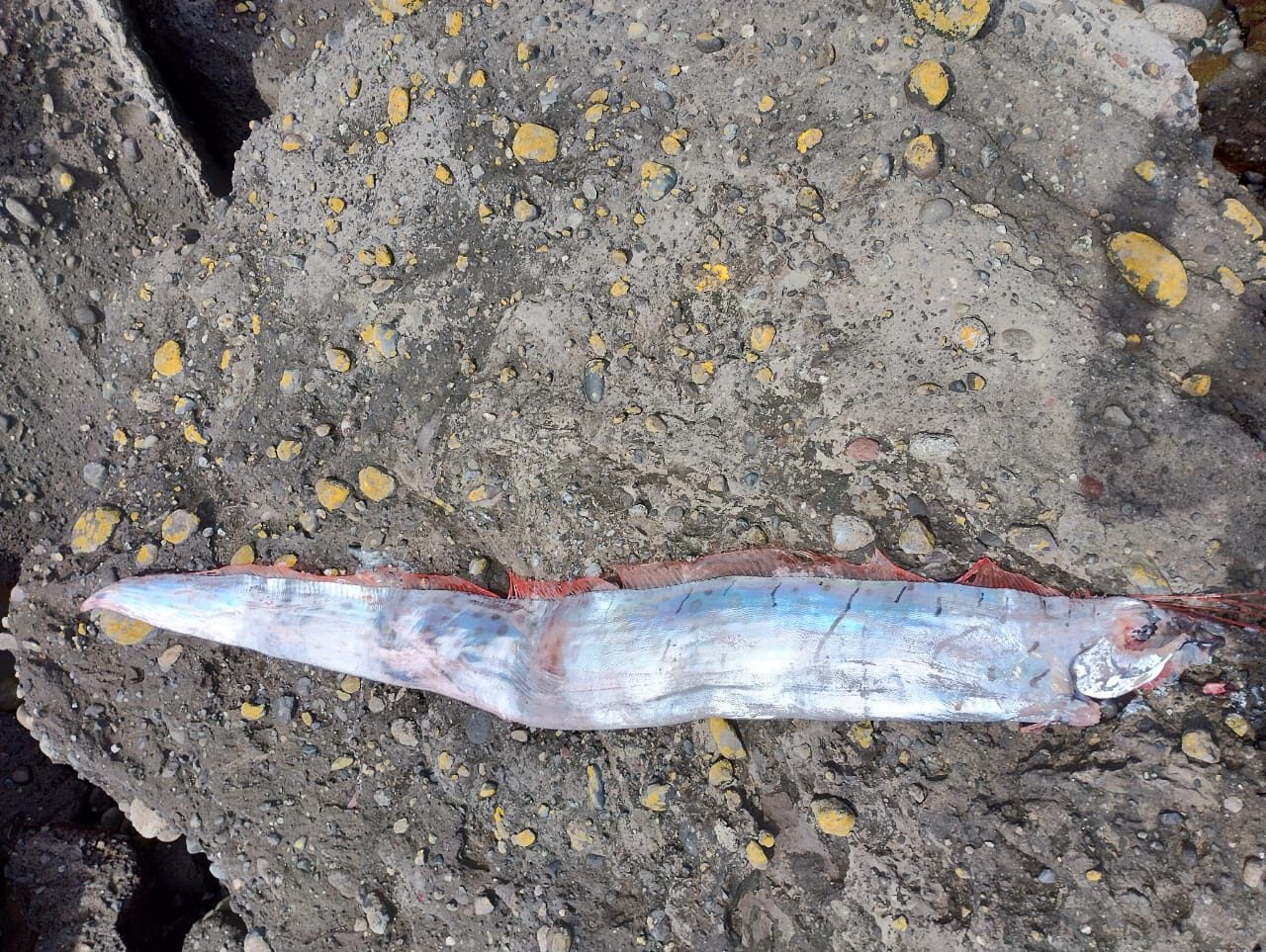
Locals were flabbergasted after a 15-foot oarfish — which is rumored to be a sign of impending earthquakes — drifted ashore on a beach in Chile. A video of the alleged oceanic bad omen is currently making waves online as viewers worry about a possible seismic event, Jam Press reported.
The massive oarfish — which is the world's largest bony fish, capable of growing to 56 feet long — washed up on the coast of Isla Talcán in Chile's Desertores Islands. Footage captured the tremor-predicting denizen of the deep, which has silver scales, a fiery orange head tassel and a dorsal fin traversing its body from head to tail.
This sighting was particularly rare given that the species generally reside at depths between 656 and 3,200 feet below the ocean's surface. In fact, many people believe that oarfish strandings are signs that an earthquake is around the corner.
Viewers of the video on social media expressed shock at seeing the reportedly prognosticating creature.
"Earthquake is coming," said one tweeter, while another exclaimed, "We are all going to die!"
"You don't have to believe me, but in Chile that fish is a sign of a bad omen," offered another viewer with their own take on its potential effect.
This earthquake superstition is based on Japanese mythology, which states that the slender plankton-eater will purposely rise to the surface and beach themselves whenever they believe trouble's on the horizon.
These fears ramped up during the 2011 Fukushima earthquake and tsunami, as dozens of the pelagic beasts had washed ashore in the two years preceding the catastrophe, Jam Press reported.
However, experts have since sought to dispel the myth.
"The link to reports of seismic activity goes back many, many years, but there is no scientific evidence of a connection, so I don't think people need to worry," explained Hiroyuki Motomura, a professor of ichthyology at Kagoshima University. "I believe these fish tend to rise to the surface when their physical condition is poor, rising on water currents, which is why they are so often dead when they are found."
Comment: For a more open-minded stance on stranded oarfish being possible indicators to an imminent major quake, see:
Dead oarfish found off Mindanao, Philippines prior to seismic activity: Can animals predict earthquakes?
Nonetheless, the superstition still persists with the most recent example coming last month after Mexican anglers landed one of the critters, sparking fears that a tremor was around the bend.



Just need some fries and we are good.